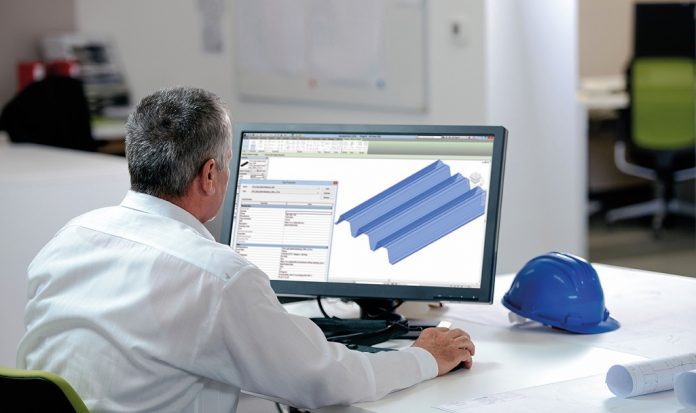BIM and Digital Platforms Manager Alex Small discusses the challenges of producing Building Information Modelling objects for thousands of products
As a global organisation, the adoption of Building Information Modelling (BIM) for Tata Steel is a momentous task, when considering each product range, brand and number of products manufactured and produced by the company.
The UK is a pioneer when it comes to European-focused BIM application. With BIM Level 2 legislation in place, meaning BIM is an official requirement on all centrally procured public sector developments, UK companies are leading the way for the rest of Europe, due to a developed BIM thought process.
As such, contractors and customers value having complete access to BIM objects and digital product data. However, for a company the size of Tata Steel with multiple brands and product groups, containing hundreds of products, creating and launching a complete range of BIM objects for a global audience was deemed, at very least, a daunting task.
With multiple languages, technical requirements and preferred software platforms to consider, each product group or brand within the company was designated a BIM Champion. This person was then responsible for liaising with the BIM Champion network to develop the BIM objects for their respective group.
Creating a BIM object
After considering the various approaches, how to best utilise resource and incorporate knowledge learnt along the way, a BIM object production line was set up. This consequently meant that the product groups and brands had to be planned in order of priority, with the UK leading the list due to legislative requirements.
This meant that the process of creating each brand and product group’s BIM objects was constantly evolving and improving as more objects were created. For example, while one brand’s objects were being filled with data, another brand’s data was in collation at the same time as a different product group’s objects were being developed within the software.
This structured approach meant that each brand or product group could follow and learn from the previous one, saving time and creating a constantly evolving system aiming for best practice. Each brand’s objects were therefore developed according to an effectively managed workload that retained the flexibility needed for creating and implementing a new system. Ideal for large scale BIM object production, a manufacturing production line is perfect for those companies beginning a journey and are constantly learning and evolving.
What to do on your BIM journey
For companies about to embark upon their BIM journey, I would recommend not trying to reinvent the wheel. Time, effort and money can be saved by seeking advice from trade associations, manufacturers, colleagues and industry bodies. And after all, transparency and collaboration are at the heart of BIM. As such, Tata Steel is happy to share its data templates with the industry to enhance and support the adoption of BIM.
While the mere mention of ‘BIM’ can invoke in some a state of panic, it is important to approach the challenge in a rational manner. BIM objects contain product information. This information is not new; it is simply being digitised from a traditional product catalogue or brochure. Once the task has been normalised and any surrounding noise removed, the journey can actually be quite smooth.
With over 7,000 construction products, Tata Steel’s BIM objects are hosted by BIMobject® and Co-builder
Alex Small
BIM and Digital Platforms Manager
Tata Steel
alex.small@tatasteel.com
www.tatasteelconstruction.com/BIM
Please note: this is a commercial profile














